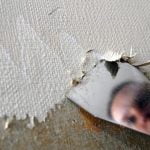Are you wondering, “How do I improve the air quality in my home?” The answer to that question is crucial for your health and well-being. The air inside your home can contain a variety of pollutants that can negatively impact your respiratory system and overall health. Understanding the importance of air quality in your home is the first step towards creating a healthier living environment for you and your family.
Indoor air pollutants such as mold, pet dander, dust mites, and volatile organic compounds (VOCs) can lead to various health issues, including allergies, asthma, and respiratory infections. Identifying these common indoor air pollutants is essential in taking steps to improve the air quality in your home and protect yourself from potential health risks.
In this article, we will explore different strategies and techniques for enhancing the air quality in your home. From improving ventilation and investing in air purifiers to incorporating houseplants as natural air purifiers and eliminating sources of indoor pollution, we will provide you with valuable insights on how to create a healthy and safe environment within your home.
Let’s delve into the world of indoor air quality and learn how to make positive changes for the well-being of you and your loved ones.
Identifying Common Indoor Air Pollutants
Indoor air pollutants can come from a variety of sources, and being aware of these common culprits is the first step to improving the air quality in your home. One of the most prevalent indoor air pollutants is tobacco smoke, which can linger in the air for long periods and pose serious health risks. Another common pollutant is radon, a naturally occurring radioactive gas that can enter your home through cracks and gaps in the foundation.
Additionally, household cleaning products, as well as building materials such as asbestos and lead, can release harmful chemicals into the air. Biological pollutants such as mold, pet dander, and pollen can also significantly affect indoor air quality, particularly for those with allergies or respiratory conditions. Being mindful of these common indoor air pollutants can help you take targeted steps to reduce their presence in your home.
To further understand the specific indoor air pollutants present in your home, it may be beneficial to conduct an indoor air quality test. These tests can measure levels of various contaminants and provide valuable insights into potential sources of poor indoor air quality. By identifying common indoor air pollutants and their sources in your home, you can make informed decisions about how to best address these issues and improve the overall air quality for you and your family.
| Common Indoor Air Pollutants | Potential Health Risks |
|---|---|
| Tobacco Smoke | Respiratory issues, increased risk of cancer |
| Radon | Lung cancer |
| Cleaning Products/Chemicals | Respiratory irritation, headaches |
Tips for Improving Ventilation in Your Home
Improving ventilation in your home is crucial for maintaining good air quality. Proper ventilation helps to reduce indoor air pollutants and prevent the buildup of harmful gases and allergens. One way to improve ventilation is by opening windows and doors regularly to allow fresh air to circulate throughout your home. This can help remove indoor pollutants and bring in clean outdoor air.
In addition to opening windows, using exhaust fans in bathrooms and kitchens can also help improve ventilation by removing moisture, odors, and pollutants from the air. It’s important to ensure that these fans are vented to the outdoors rather than into an attic or another enclosed space. This will prevent the accumulation of moisture and pollutants indoors.
Another way to promote good ventilation is by using a whole-house ventilation system that brings in fresh outdoor air while expelling stale indoor air. These systems can help maintain proper indoor humidity levels and reduce the concentration of indoor air pollutants. By improving ventilation in your home, you can create a healthier living environment for you and your family.
| Improving Ventilation | Benefits |
|---|---|
| Opening Windows and Doors | Allows fresh air circulation |
| Using Exhaust Fans | Removes moisture, odors, and pollutants |
| Whole-House Ventilation System | Reduces concentration of indoor pollutants |
Investing in Air Purifiers and Filters
When it comes to improving the air quality in your home, investing in air purifiers and filters can make a significant difference. These devices are designed to remove pollutants and allergens from the air, creating a cleaner and healthier indoor environment. Here are some tips for choosing and using air purifiers and filters:
- Understand your needs: Before purchasing an air purifier or filter, consider what specific pollutants you want to target. Whether it’s dust, pet dander, pollen, or smoke, different models are designed to address different concerns.
- Choose the right size: The size of the room where you will be using the air purifier will determine the appropriate size and strength of the device. Make sure to measure the room before making a purchase.
- Regular maintenance: To ensure that your air purifier continues to work effectively, it’s important to regularly clean or replace the filters as recommended by the manufacturer.
In addition to investing in air purifiers, using high-quality air filters for your HVAC system can also help improve indoor air quality. These filters trap dust, pollen, and other particles before they circulate through your home. Be sure to replace these filters as recommended by the manufacturer for optimal performance.
By investing in air purifiers and filters, you can take proactive steps towards keeping the air in your home clean and safe for you and your family. These devices can be particularly beneficial for individuals who suffer from allergies or respiratory conditions, providing relief from indoor pollutants.
Introduction to Houseplants as Natural Air Purifiers
Houseplants not only add a touch of natural beauty to your home, but they also have the added benefit of improving indoor air quality. By introducing certain types of houseplants, you can effectively reduce the levels of indoor air pollutants and create a healthier living environment for you and your family. Here are some popular houseplants that are known for their air purifying qualities:
- Spider Plant: This easy-to-care-for plant is excellent at removing formaldehyde, xylene, and toluene from the air.
- Peace Lily: Known for its beautiful white flowers, the peace lily is effective in removing ammonia, benzene, formaldehyde, and trichloroethylene from indoor air.
- Aloe Vera: In addition to its many health benefits, aloe vera can help remove formaldehyde from the air and is also an easy-to-maintain plant.
In addition to their air-purifying abilities, houseplants can also contribute to overall well-being by reducing stress levels and increasing feelings of calmness and relaxation. Incorporating these natural purifiers into your home can have multiple benefits beyond just cleaner air.
How to Care for Air-Purifying Houseplants
Once you’ve selected the right houseplants for your home, it’s important to provide them with proper care to ensure they continue to effectively purify the air. Here are some general tips for caring for air-purifying houseplants:
- Watering: Each type of plant has different watering needs, so be sure to research the specific requirements for your plants.
- Light: Most air-purifying plants require indirect sunlight or partial shade. Make sure to place them in areas where they can get enough light without being exposed to direct sunlight for long periods.
- Potting soil: Use high-quality potting soil that provides good drainage while retaining enough moisture for healthy plant growth.
By properly maintaining your houseplants, you can ensure that they continue to thrive and improve the quality of the air in your home.
Eliminating Sources of Indoor Pollution
Identifying and Addressing Sources of Indoor Pollution
One of the most crucial steps in improving the air quality in your home is to identify and eliminate sources of indoor pollution. Common sources of indoor pollution include tobacco smoke, cooking fumes, mold, pet dander, and household chemicals. It’s important to be mindful of these sources and take proactive steps to minimize their impact on the air you breathe.
Implementing Smoke-Free Policies
If you or anyone in your household smokes, it’s essential to create a smoke-free environment indoors. Secondhand smoke can have serious health effects on those exposed to it. Encourage smokers to smoke outside the house, away from doors and windows. Additionally, consider implementing a strict no-smoking policy inside the home to protect the indoor air quality for everyone.
Reducing VOCs and Chemical Exposure
Many household products contain volatile organic compounds (VOCs) that can contribute to indoor air pollution. These compounds are found in cleaning solutions, paint, varnishes, air fresheners, and even some furniture. Opt for low-VOC or VOC-free products whenever possible. Proper ventilation when using these products is also crucial in minimizing their impact on indoor air quality. Additionally, consider switching to natural alternatives like vinegar and baking soda for cleaning to reduce chemical exposure.
Maintaining a Clean and Dust-Free Home
Establishing a Regular Cleaning Routine
One of the most effective ways to improve air quality in your home is by maintaining a clean and dust-free environment. Establishing a regular cleaning routine is essential to minimize the buildup of dust, pet dander, and other indoor pollutants.
Vacuuming carpets and upholstery, dusting surfaces, and cleaning floors are all important tasks that should be done on a consistent basis. Additionally, washing bedding, curtains, and other fabrics regularly can also help reduce the presence of allergens in your home.
Using Environmentally-Friendly Cleaning Products
When cleaning your home, it’s important to choose environmentally-friendly cleaning products that are free from harsh chemicals. Many conventional cleaning products contain volatile organic compounds (VOCs) that can contribute to indoor air pollution. Opt for natural alternatives such as vinegar, baking soda, or eco-friendly brands that are safer for both your health and the environment.
Paying Attention to Hidden Areas
In addition to the visible surfaces in your home, it’s crucial to pay attention to hidden areas where dust and other pollutants can accumulate. These areas may include air vents, ceiling fans, behind furniture, and inside closets. Regularly cleaning these often overlooked spaces will help maintain better air quality throughout your home. By being thorough in your cleaning efforts, you can create a cleaner environment for you and your family.
By incorporating these strategies into your household maintenance routine, you can significantly improve the air quality in your home and create a healthier living space for you and your loved ones. Regular cleaning not only reduces the presence of indoor pollutants but also contributes to a more comfortable and enjoyable living environment overall.
Conclusion
In conclusion, ensuring good air quality in your home is essential for the health and well-being of you and your family. By implementing the tips outlined in this article, you can take proactive steps to improve the air quality inside your home. From identifying common indoor air pollutants to investing in air purifiers and filters, there are various measures you can take to make your home a healthier and safer environment.
By improving ventilation, investing in air purifiers, introducing houseplants as natural air purifiers, eliminating sources of indoor pollution, and maintaining a clean and dust-free home, you can significantly reduce the presence of harmful pollutants in the air. These actions not only contribute to better indoor air quality but also promote a healthier lifestyle for you and your loved ones.
In essence, taking control of your indoor environment by following these guidelines can lead to a healthier and happier life. Making these changes may require some initial investment of time and money, but the long-term benefits far outweigh the costs. Ultimately, by prioritizing good air quality in your home, you are creating a safe and healthy environment where you and your family can thrive.
Frequently Asked Questions
How Can I Improve My Indoor Air Quality?
Improving indoor air quality can be done through a few different methods. First, regularly changing air filters in HVAC systems can help trap dust, pollen, and other particles.
Adding houseplants such as spider plants or peace lilies can also help to naturally filter the air. Keeping the house clean by vacuuming and dusting regularly can also prevent buildup of allergens and pollutants.
What Are the Symptoms of Poor Air Quality in a House?
Poor air quality in a house can manifest in several ways. Common symptoms include respiratory issues like coughing, sneezing, and shortness of breath. Allergies may also worsen with poor air quality, leading to symptoms like itchy eyes, runny nose, or worsening asthma symptoms. Headaches and fatigue may also occur as a result of breathing in pollutants or allergens indoors.
How Do I Naturally Purify the Air in My House?
There are natural ways to purify the air in your house without relying on chemical sprays or plugins. Houseplants such as aloe vera, bamboo palm, or snake plant can help remove toxins from the air and release oxygen.
Opening windows and using fans to bring fresh air inside can also help improve indoor air circulation. Another natural method is using essential oils like tea tree oil or eucalyptus to create a pleasant aroma while effectively purifying the air.

I’m thrilled to have you here as a part of the Remodeling Top community. This is where my journey as an architect and remodeling enthusiast intersects with your passion for transforming houses into dream homes.





